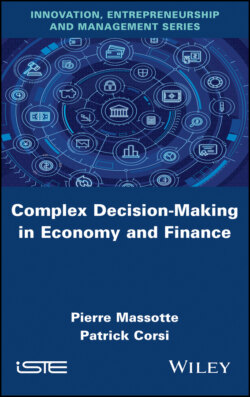Читать книгу Complex Decision-Making in Economy and Finance - Pierre Massotte - Страница 39
1.5.2. Design of complex industrial systems management tools
ОглавлениеWhen we consider the new structure of production workshops, we must instead speak of production networks because production systems are, in fact, made up of cells and resources that communicate and interact with each other in such a way as to constitute self-configuring systems. Such systems have been extensively studied at the VTT Laboratory in Helsinki, Finland [RAN 93].
Autonomy and self-organization are essential characteristics of future production systems. Combined with these concepts, and to produce customized products, with a high reactivity to meet demand, it is important to implement new principles of planning, scheduling, piloting and control. However, limiting the ability of systems to be flexible and adaptable through the improvement of their operation or production control functions leads us to play on other potentialities such as interactions between functions, autonomy and system dynamics. This is mainly due to the increasing difficulties encountered in solving problems of scheduling, synchronization and development of the right ranges: as everyone knows, it is indeed very difficult to determine good scheduling in multi-product processes and multi-processes under conditions of nonlinearity and uninterpretable discontinuities.
Of course, there has long been an attempt to simplify processes and improve their flexibility by developing increasingly complicated strategies and algorithms (in a study conducted in 1993 in the industry, more than 430 scheduling algorithms corresponding to specific problems had been identified, around the production control community, by our team in IBM. Some of them are now considered as algorithms for AI; this demonstrates the many various approaches in machine learning and solution elaboration in planning and scheduling). The question then is: should we continue to try to solve each new problem in a traditional way? How far will we go in the level of complexity to be understood? Can we not work on new and more original approaches? Can we not take better advantage of the intrinsic properties of the systems concerned? How can we exploit new architectures or properties? Here again, we are tackling a new paradigm, which will be part of the familiar domains to come and which are called: fractal factory, virtual factory, agile manufacturing, etc.
Future production systems will not only have to be adaptable, but also have to be able to change the configuration of their own structure as well as the structure and functional principles of the production system itself. Thus, production systems will have to be reconfigurable, self-reconfiguring or scalable, which implies notions of modularity, autonomy and self-organization. This means that they are able to allocate, by their own means, the right resources, the right control and monitoring system, assign the right tasks at the right time to each cell and define the right priorities.
